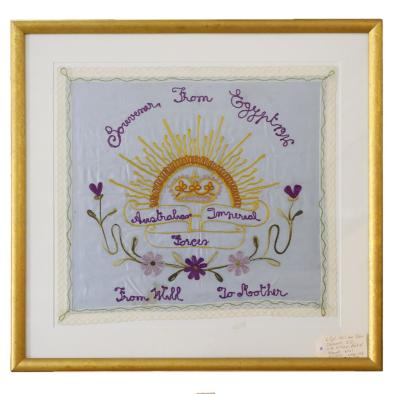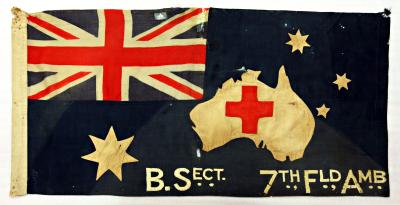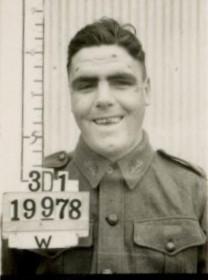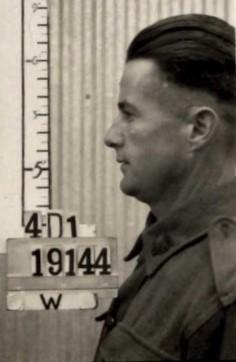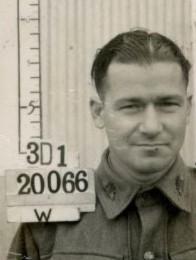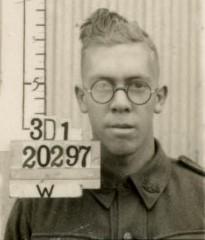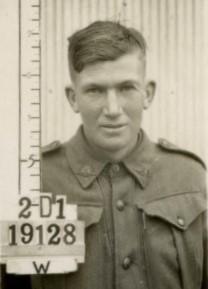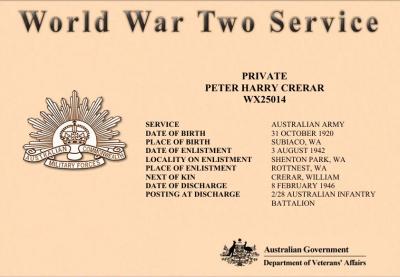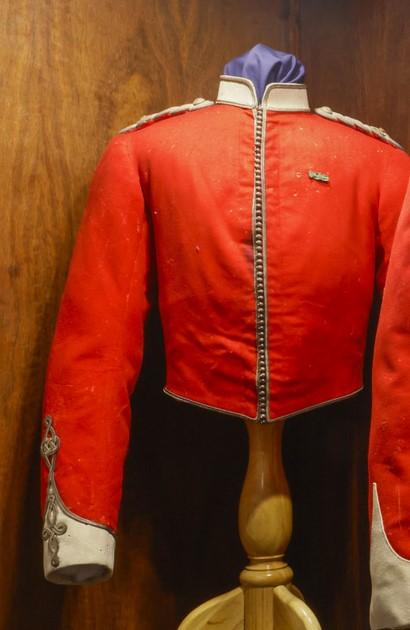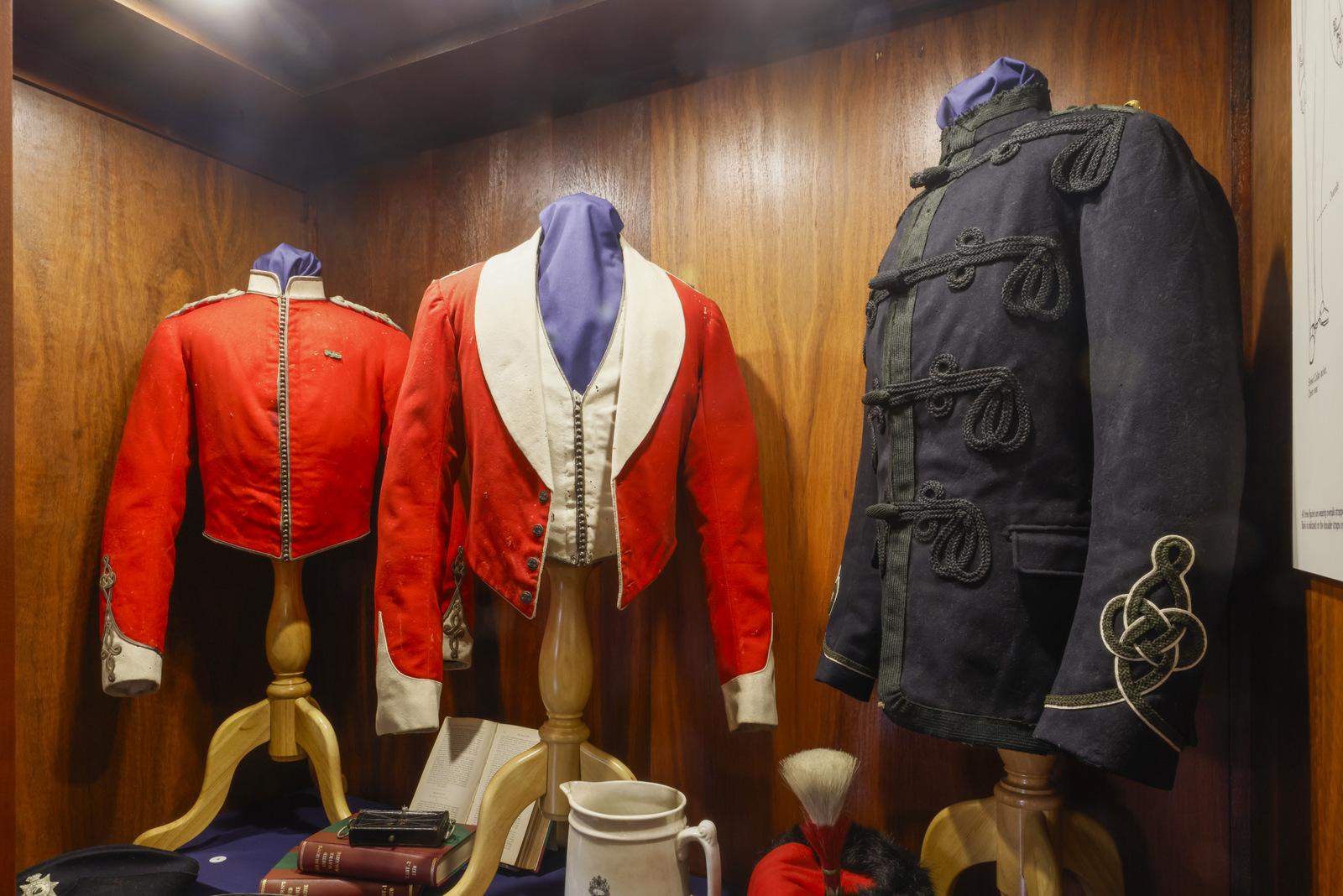Pre 1914, Mess Dress Jacket, JOSE, Geraldton Rifle Volunteers, 1886
High collar closed front mess dress jacket with white infantry facings worn by Lieutenant W Jose of the Geraldton Rifle Volunteers. Lieutenant Jose is frequently mentioned in the local media (refer Trove) when unit parades and shooting competitions are reported. Mess uniforms first appeared in the British Army in about 1845, initially utilizing the short "shell jacket" worn since 1831. This working jacket was worn open over a regimental waistcoat for evening dress.The original purpose was to provide a relatively comfortable and inexpensive alternative to the stiff and elaborate full-dress uniforms then worn by officers for evening social functions such as regimental dinners or balls.[18] With the general disappearance of full dress uniforms after World War I, mess dress became the most colourful and traditional uniform to be retained by most officers in British and Commonwealth armies
Approval to form a Volunteer Infantry corps in the Champion Bay district appeared in the Government Gazette of 10 October 1876. The new corps was designated the "Geraldton Rifle Volunteers", with Headquarters at Geraldton. Capt. J.N. Hillman was appointed to Command.
The corps was administratively independent and in all matters dealt direct with the Military Commandant. Names on the roll totalled 60 in 1876, 48 in 1883, 67 in 1892, and 51 in 1895.
Lieutenant W Jose, was recorded as a member of the unit from 11 August 1886.
Apart from its deeds of prowess on the rifle range (which were outstanding) there is little on record concerning the activities of this corps: it was located so far from the others that particularly in the earlier years it could not participate with them in the higher forms of training. A small camp of training was held in the vicinity of Geraldton in 1884 - this was the first held by the corps. A detachment, with Lieutenant S. Mitchell in Command, was raised at Northampton in 1885. On 8 October 1900, the corps was included with those of Guildford, Bunbury, and York to form the 3rd Battalion Western Australian Infantry Brigade.
Details
Details
Scarlet barathea closed collar jacket faced white, collar and cuffs. Piped all around collar, leading edge and bottom of jacket by silver braid. Pointed cuffs with Austrian knot on top and below double knot. On front left breast is a green ribbon Volunteer Medal. Inside padded red velvet lining, lined at bottom by maroon Morocco leather. Collar lined with black velvet with hook and eye fastner, as well as braid strap. There is a left inside pocket. Inside lining and collar damaged. Label on collar, ''W.Jose. Esq''. Back bottom of jacket finished in a point. Left leading edge decorated with a row of metal balls fastened with hook and eyes. Shoulder straps of silver bullion cord, silver metal button with ''GRV'' and gold metal bullion star/pip. Jacket measures shoulder 375mm wide, front of breast 440mm long, collar 41mm high, back 487mm and sleeves 612mm long.
This uniform is displayed in the Pre 1914 Gallery at the Australian Army Museum of Western Australia.
Australian Army Museum of Western Australia
Australian Army Museum of Western Australia
Other items from Australian Army Museum of Western Australia
- TUNIC, khaki drill, Scotch College Cadet
- World War 1, Framed Souvenir Embroidery, 872 CLEMENTS, 11 Battalion, 1916
- 7 Field Ambulance Flag
- World War 1, Home Front, Commonwealth Button Fund (28) - Wattle Day "Peace, 1919"
- King Edward VII Coronation Medal
- World War 2, Western Australia, Rottnest Island AIF Enlistment, W56254 to WX30833 HOSKEN, 1942
- World War 2, Western Australia, Rottnest Island AIF Enlistment, W19978 TO WX25018 GANE, 1942
- World War 2, Western Australia, Rottnest Island AIF Enlistment, W18144 to WX25012 WILSON, 1942
- World War 2, Western Australia, Rottnest Island AIF Enlistment, W20066 to WX25002 ISBEL, 1942
- World War 2, Western Australia, Rottnest Island AIF Enlistment, W20297 to WX25003, RUSS, 1942
- World War 2, Western Australia, Rottnest Island AIF Enlistment, W19128 to WX25011 COCKMAN, 1942
- World War 2, Western Australia, Rottnest Island AIF Enlistment, W19818 to WX25014 CRERAR, 1942

